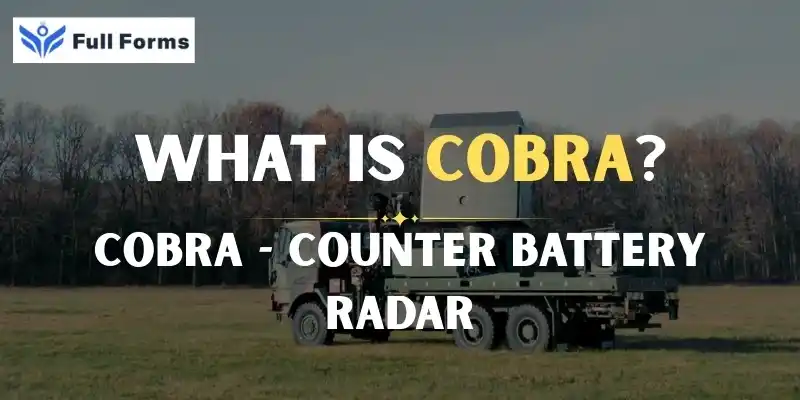Counter Battery Radar
(COBRA)

Description
Counter-Battery Radar: The Quiet Protector in Today's War
In tech wars, it's important to stay one step ahead of the competition. Counter Battery Radar (CBR) is one of the most effective instruments used by contemporary armies to identify, track down, and destroy enemy artillery. Though it works silently at the background, this technology in real sense has a great role toward protecting troops and sustaining battlefield advantage.
Let us take a look at what counter battery radar is, how it works, and how critical its role in modern military operations becomes.
What Is Counter Battery Radar?
Counter battery radar is basically a special type of radar system designed to detect and track the path of artillery shells, rockets, and mortars fired by the enemy. The basic function that it serves is finding out their exact place of origin so that friendly forces can carry out an immediate and precise response.
CBR systems do not just provide early warning; they assist in delivering counter-fire. Counter-fire means firing at the enemy before he has time to move or fire again. This turns the radar from a passive observer into an active participant and tactically important asset on the battlefield.
How Does It Work?
Here’s how the system functions:
The radar looks up into the sky at all high-speed projectiles. When a shell comes in, it tracks its path. With the use of complex algorithms, the system computes the path of the projectile both forward - so as to predict its impact - and backward - so as to determine its launch location. The radar gives exact coordinates on where the enemy is firing from.
This goes directly to friendly artillery or air units who launch a counterstrike at the enemy battery in efforts to silence it. Some systems also provide for the capability of tracking several shells simultaneously and can differentiate between mortars, howitzers or even rocket launchers. Many different radar systems are used all over the globe, based on the needs of a country’s defense and also based on its technological capability. Some common CBR systems include:
- AN/TPQ-53 (USA): It is a mobile radar system capable of tracking multiple projectiles in real-time with 360-degree coverage.
- ARTHUR (Europe): Lightweight, mobile radar adopted by various NATO forces.
- Swathi Weapon Locating Radar (India): Developed by DRDO to mountain terrains and challenging environments.
Each of these weapons systems accrues certain distinct advantages about range, and mobility, in addition to accuracy.
Advantages of Counter Battery Radar
The Counter Battery Radar literally changes the face of the battlefield in more than one way by providing an immediate warning. Troops have about 90-120 seconds to take cover before the incoming round strikes. The friendly forces are able to return fire with the same level of precision as that of an attacker.
Mental Edge: If the enemy knows that every shot they take can be spotted, then those guns will always be moving. Less effective fire.
Essentially, it turns the balance of power by using the attacker’s own aggression against them in favor of the defender.
Jamming and EW
An adversary may attempt to jam the radar signals with active jammers or decoys.
Mobility, Exposure
While predominantly mobile, they do require setup time. If not relocated in time, they become targets.
No matter how good your radars are, saturation attacks (more than one round fired in very quick succession) will beat them in a high-intensity conflict.
As war changes, so does the radar
The future generation of CBR systems most likely involves:
- Artificial Intelligence (AI) for faster data processing and more accurate detection.
- Drones coverage for a wider area and remote targeting by air-based platforms.
- Networked radar capability with all other sensors on the battlefield sharing information about enemy movement.
Increasing reliance on precision and real-time decision making, counter battery radars are expected to become more compact, more mobile, and more autonomous.
Conclusion
Counter Battery Radar may not grab headlines like fighter jets or tanks, but its importance on the battlefield cannot be overstated. It is a silent shield — one that watches the sky, predicts danger, and responds faster than the enemy expects.
In a world measured by seconds, the CBR systems provide that edge which forces require to sustain, protect, and emerge victorious. Be it in conventional warfare scenarios, peace support operations or even border defense operations radars have now become a vital component of contemporary military might.
